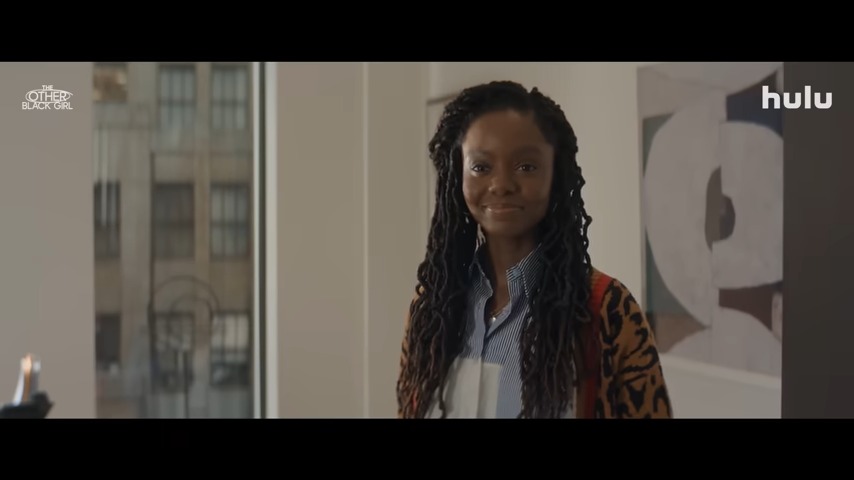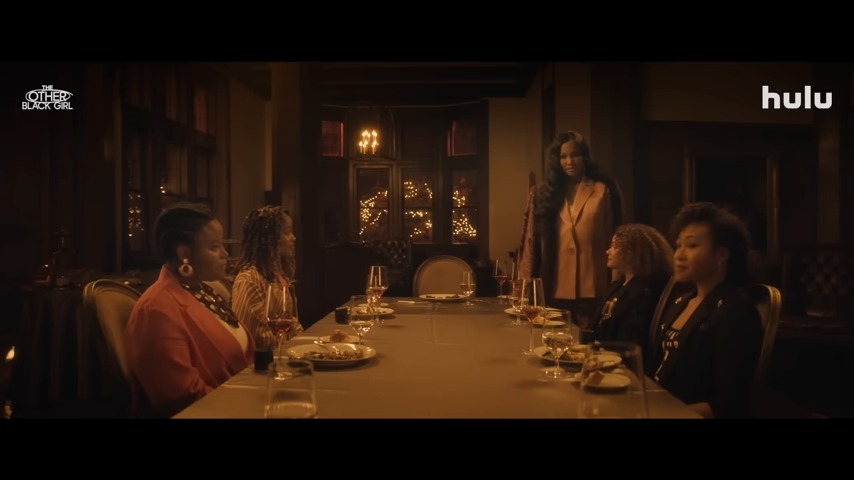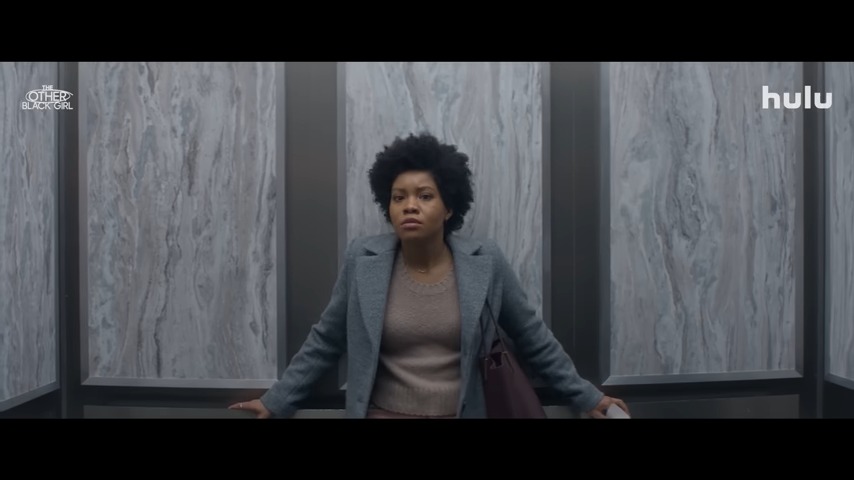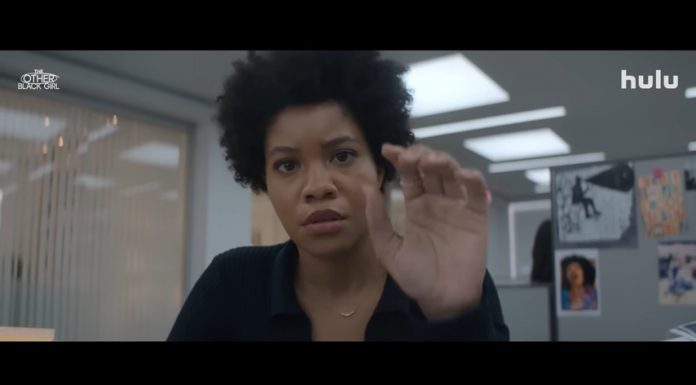The interesting television series “The Other Black Girl” explores the complexities of workplace dynamics, racial identity, and the price of success in a predominately white corporate world. This 10-episode television series, which is based on the compelling 2021 novel of the same name by Zakiya Dalila Harris, has captivated audiences. It had its Hulu debut on September 13, 2023, and since then, people have been talking about it because of the show’s intriguing plot and unexpected turns.
We’ll set off on a voyage through “The Other Black Girl’s” universe in this essay. We’ll analyze the key differences between the TV series and the novel it is based on, as well as the narrative and the intricate details of the resolution. (tvacute.com) We’ll also explore the motivations behind the choice to create an ending that differs from the original source material.
The Other Black Girl Story

The compelling narrative of “The Other Black Girl” centers on Nella Rogers (Sinclair Daniel), a young, aspirational Black woman who works as an editorial assistant at the esteemed Wagner Books. When another Black woman, Hazel-May McCall (Ashleigh Murray), starts working for the company and replaces Nella as the only Black employee, Nella’s life takes a turbulent turn.
Nella is initially ecstatic at the possibility of working with another Black woman because she hopes the two of them will bond and encourage one another. But as the narrative progresses, she starts to observe odd happenings at work and in her personal life. She begins to experience microaggressions and gaslighting occurrences, which all appear to have started when Hazel entered her life.
Nella sets out on a search for answers as these instances multiply and increasingly point to Hazel. Along the way, she unearths deeper secrets about Wagner’s Books than she could have ever imagined. A thrilling shift in the plot keeps spectators on the edge of their seats.
The Other Black Girl’s Ending Explained!

“The Other Black Girl”‘s climax and resolution are nothing short of an emotional rollercoaster. Nella reveals the terrible truth about Hazel in the last episodes. It turns out that Hazel belongs to a secret society called the “Sisterhood.” The nefarious goal of this organization is to find intelligent, capable Black women and to manipulate them into integrating into the largely white business world.
This alteration was done using a fairly uncommon technique: hair grease. This inexpensive hair product is used to exert control over people by blocking their ventromedial prefrontal cortex, which removes feelings of shame and struggle. The deceived women are promised social comfort and material success in the business sphere in exchange for acquiescence.
Nella’s inquiry indicates that Diana Gordon (Garcelle Beauvais), a well-known Black author whose debut book was released by Wagner, is the mastermind behind this scheme. Kendra Rae Phillips (Young Kendra Rae Phillips played by Cassi Maddox), Diana’s childhood friend and the only Black senior editor in Wagner’s history, became Diana’s first victim. Kendra had been on the run ever since Diana tried to brainwash her, and she was thought to be dead.
Nella also learns that Diana brainwashed Jesse Watson (Langston Kerman), a well-known activist who had previously opposed Wagner because of the organization’s institutional racism, using the same mind-altering hair grease. This shock-inducing information ripples across the story, bringing depth to the conclusion.
Nella must decide whether to utilize the hair grease and follow the sisterhood’s rules or oppose them and face an unknown future as the story reaches its climax. Nella makes the dramatic turn of selecting the former, resulting in a change that is both bodily and psychological. Her natural afro gets swapped out for a pin-straight weave as a representation of her adherence to the organization’s objectives.
In the last episode ten titled “Down with Disease”, Hazel and Diana applaud Nella for making the “right” decision and placing her in a position of authority. Nella does, however, express her genuine intentions in private. She gets in touch with her closest pals, Malaika and Kendra Rae, who are in charge of a movement of resistance against the brainwashing institution. They intend to work together to foil the sisterhood’s schemes and release those who have been manipulated by it.
What has changed between the book and the movie?

There are observable changes between the two media that distinguish them, even if “The Other Black Girl” TV series stays true to the primary themes and characters of the original book. The evolution of Hazel’s character is one notable alteration. Hazel is presented in the television adaption with more richness and sensitivity. To give viewers a better grasp of her motivations and deeds, the show devotes an entire episode to exploring her past.
The way the opposition to the brainwashing group is depicted is another notable distinction. The “Other Black Girls” and their subterfuge are met with organized resistance in the book. In contrast, the TV show only introduces viewers to Shani and Kendra Rae, two people who have been hiding out since narrowly avoiding conversion attempts. By altering the resistance dynamic, the show becomes more unpredictable and keeps viewers wondering what will happen to these characters.
Why does the TV series finale differ from the book?
To explore alternate storylines and provide room for interpretation, it was decided to create a different finale for the TV series. The original novel’s author and co-writer for the Hulu adaptation, Zakiya Dalila Harris, aimed to subvert audience expectations and offer a creative interpretation of the story’s themes.
Harris has stated that, despite the conflict Nella experienced throughout the series, she purposefully wrote an ending in which Nella decided to adhere to the sisterhood’s beliefs. Her intention to illustrate the steep price of success in stark corporate settings led her to make this choice. Both Nella’s physical and psychological changes serve as a remark on the challenges experienced by Black people in largely white businesses. It draws attention to the psychological struggles and fears that can develop when attempting to succeed in such settings.
Harris also intended to underline how Nella’s seeming ‘failure’ may also be seen as a type of accomplishment – a way to take control in a society that frequently marginalizes and disempowers Black people. The conclusion questions traditional ideas of victory and success, pushing viewers to consider the costs associated with pursuing business success.
It was intentional to use the hair grease as a representation of compliance and control to emphasize how actions can be influenced by outside forces, particularly when people are under intense societal pressure. It alludes to the difficulties many Black professionals have navigating the business world.
In conclusion, “The Other Black Girl” TV series departs from the book’s finale to offer a provocative and open-ended finish that invites viewers to consider the difficulties of success, identity, and conformity in a racially charged workplace. The variations in the conclusion serve as evidence of storytelling’s adaptability and the potency of narrative creativity. It ensures that “The Other Black Girl” will continue to enthrall and test its viewers by leaving the door open for further examination of these subjects in potential future seasons of the series.







